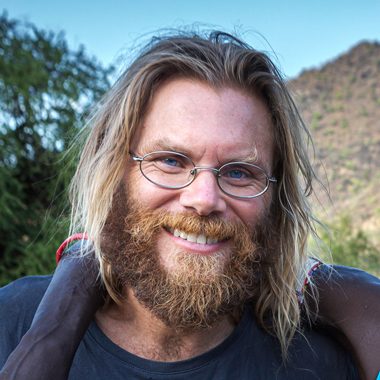The Yoruba people stand as the dominant ethnic group in the Gulf of Guinea with more than 44 million people, as well as one of the most prominent in Africa. His homeland is in southwestern Nigeria, which is the epicenter of Yoruba culture, and in the adjacent parts of Benin and Togo. This region is known as Yorubaland. Also, significant Yoruba populations can be found in other West African countries such as Ghana, Benin, Ivory Coast, and Sierra Leone.
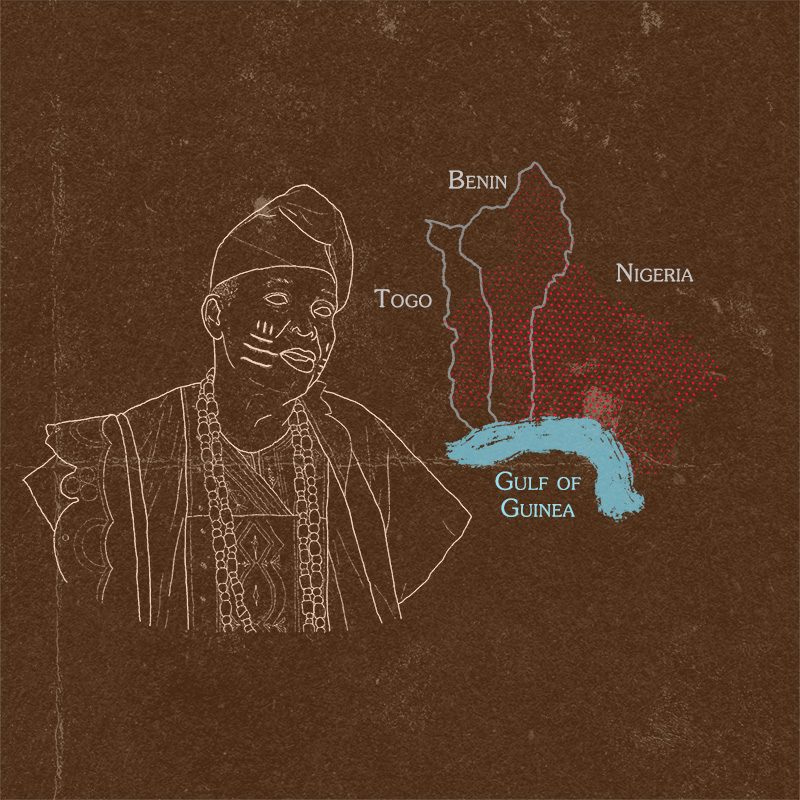
History of the Yoruba people
Historians consider that Oduduwa, the ruler of the legendary Oyo empire (approximately 1400 AD), was the father of the Yoruba people. Beyond its economic and political power, its unique culture influenced the idiosyncrasies of many peoples along the Gulf of Guinea. Its repercussion reached America from the S-XVI, due to the expansion of the slave trade. Up to 3 million Yoruba were 'exported' to the Antilles and the coast of Brazil. There they suffered for more than 3 centuries forced to do forced labor. Today, there is a Yoruba diaspora in some South American countries.
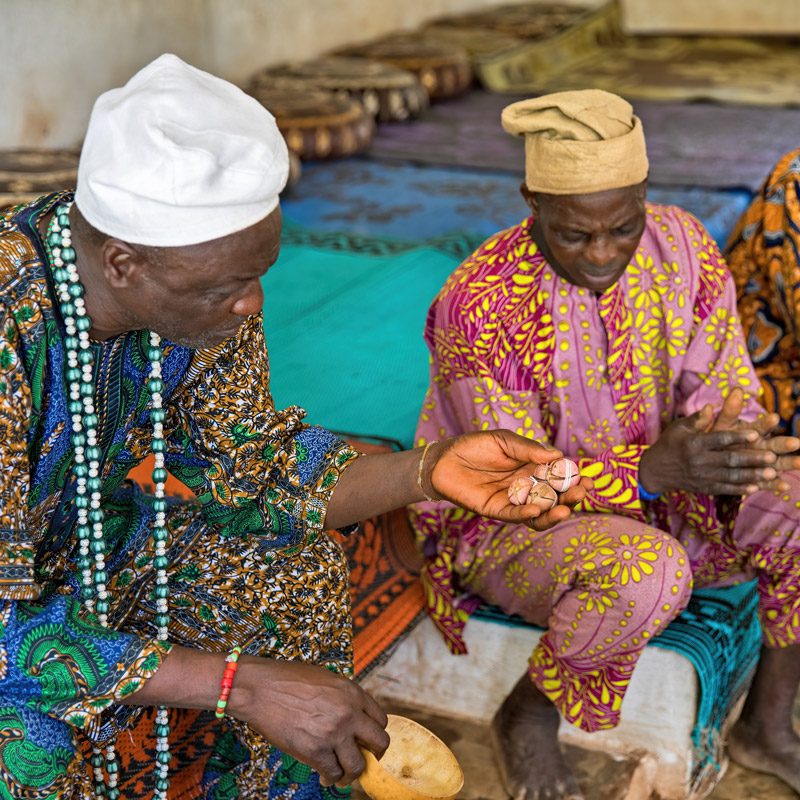
The use of the kola nut or 'obi' in religious ceremonies and rituals is widespread among the Yoruba
Yoruba religion
The Yoruba theological system is made up of the cult of 'Olodumare' (the only, supreme, omnipotent God and creator of all that exists), the pantheon of 'Orisa' and the ancestors. The 'Orisa' (also known as 'Orisha' or 'Orixa') are a group of minor deities sent by 'Olodumare' to Earth with the aim of assisting and teaching humanity. They represent the different energies of nature.
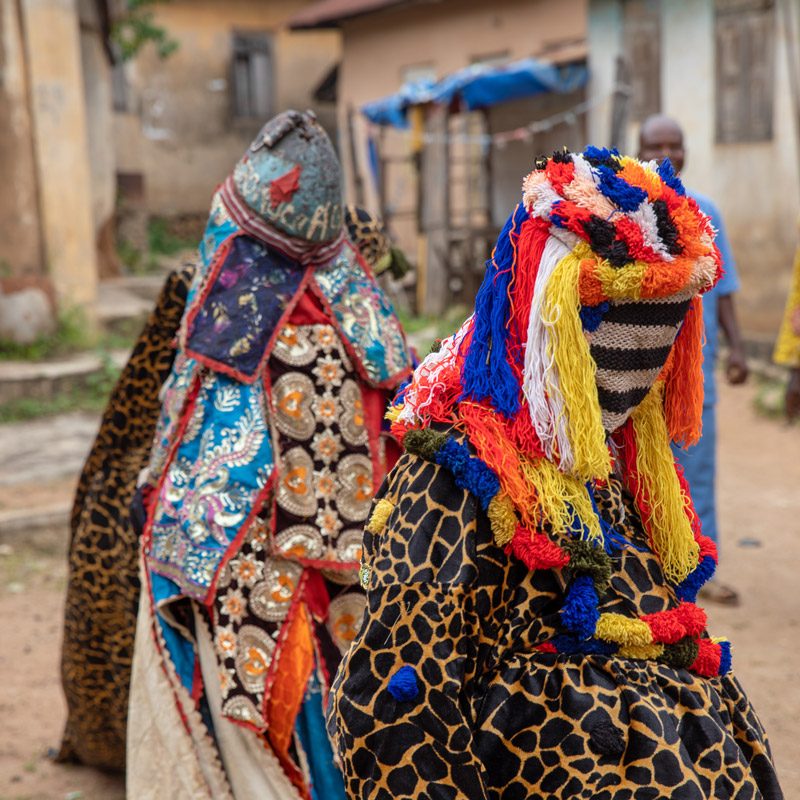
Egungun
The Yoruba social world is divided between the living, the deceased ('Egungun') and those who have not yet been born. The 'Odun Egungun' ceremonies in honor of the ancestors in order to give them their place among the living. During these ceremonies, the priest or initiate, who is covered in a colorful full-length mask, is possessed by the collective spirit of the ancestors. Through dance they encourage ethical behavior and distribute messages, warnings and blessings to the spectators.
Yoruba religious ceremonies stand out for their rich and exuberant nature. Music and dance are usually present in all ceremonies. The colorful dresses and outfits that the Yoruba people wear attest to the aesthetic sense of the Yoruba.
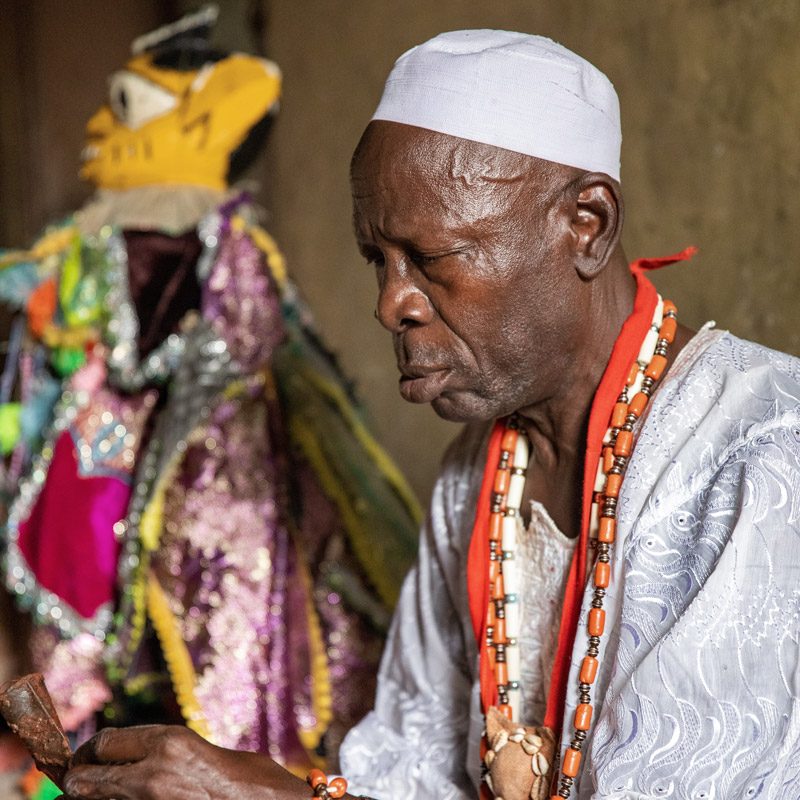
The 'babalawo' are the Yoruba priests. Through the Ifa divination system they predict the future revealed by 'Orunmila'.
Osun-Osogbo Sacred Grove
The Yoruba people celebrate the achievements reached throughout their lives, such as births, appointments, harvests, weddings, funerals... They also have festivities with a more spiritual connotation, such as the various days dedicated to each of the 'Orisa'. The annual festival dedicated to 'Osun', held in the sacred grove of 'Osun-Osogbo', attracts thousands of worshipers from all over the world.
The Yoruba religion has given rise to spiritual lineages and has influenced other religions practiced in both Africa and America.
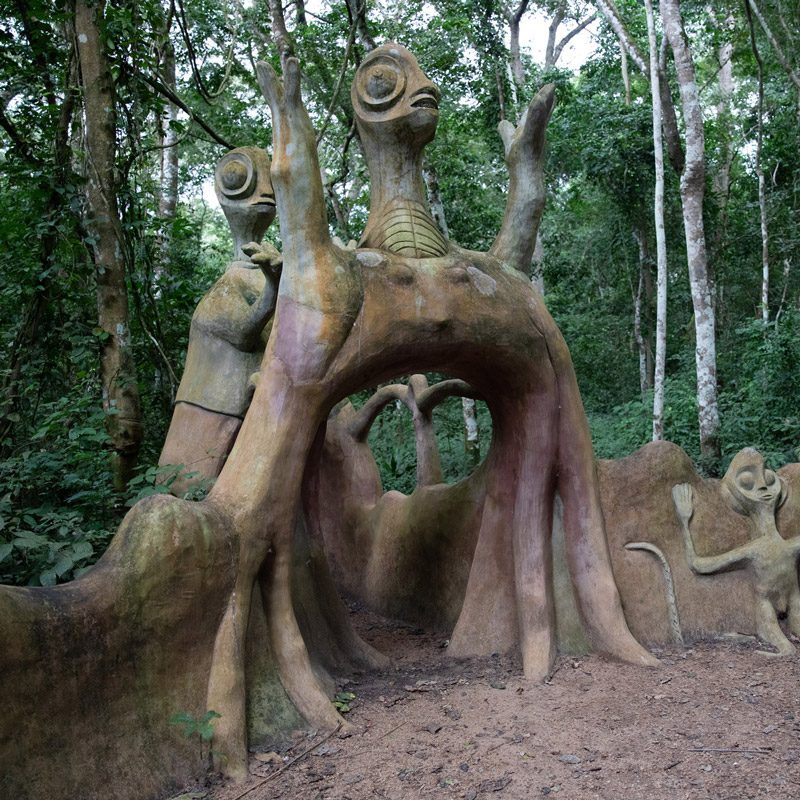
Do you want to meet the Yoruba people?
Discover the world of the Yoruba people on our trips to Nigeria. Click here to see our upcoming trips to Nigeria.
Yoruba art and architecture
The Yoruba artistic tradition has historical roots in their culture. Are world famous the commemorative heads and all kinds of works made in cast bronze, from the ancient Empire. The main characteristic of Yoruba art is its surprising realism, which contrasts with most African art.
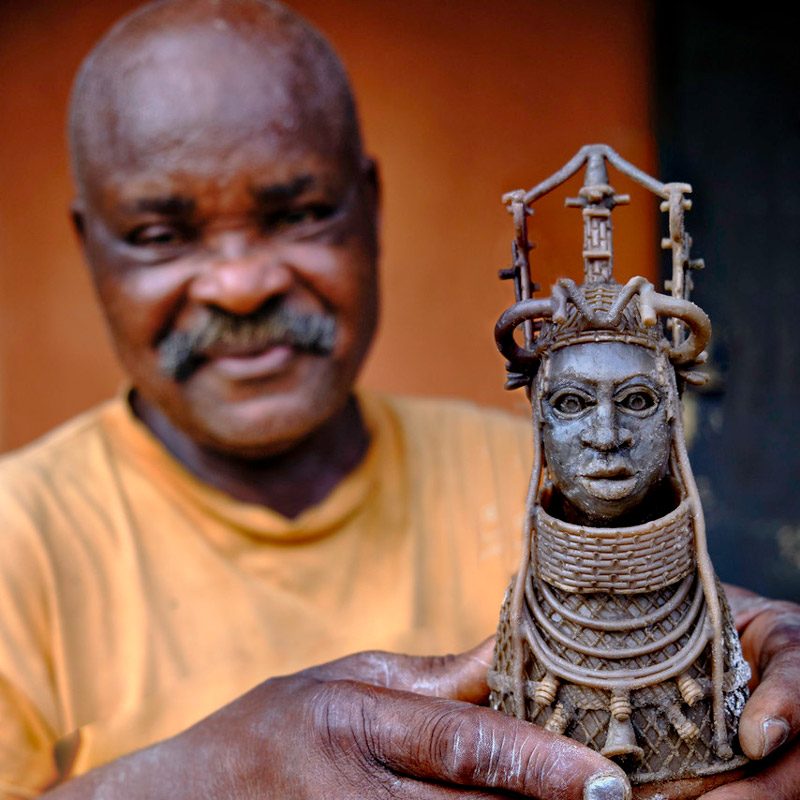
Some Yoruba artisans continue to use the lost wax casting technique through which they create bronze figures.
Yoruba architecture
The Yoruba people's traditional architecture is characterized by its rectangular buildings with thick walls, arranged around a large central courtyard. On the porches we find wooden columns adorned with carvings. Earth, wood and straw were traditionally used.
The palaces and sanctuaries are richly adorned with altar figures and other religious objects.

Afro-Brazilian architecture
When the 'aguda' (freed slaves) returned to West Africa, many took up construction. The application of construction techniques learned in Brazil gave rise to the Afro-Brazilian architectural style. These constructions are distinguished by being highly decorated with Yoruba and Brazilian motifs.

Aesthetic of the Yoruba people
Yoruba people have a long tradition of body modification. The most widespread practices are scarification and the 'kolo', which combines the previous technique with tattooing. These modifications are a form of embellishment, although they are also used for therapeutic purposes, in order to increase the qualities of the wearer to attract 'orishas'.
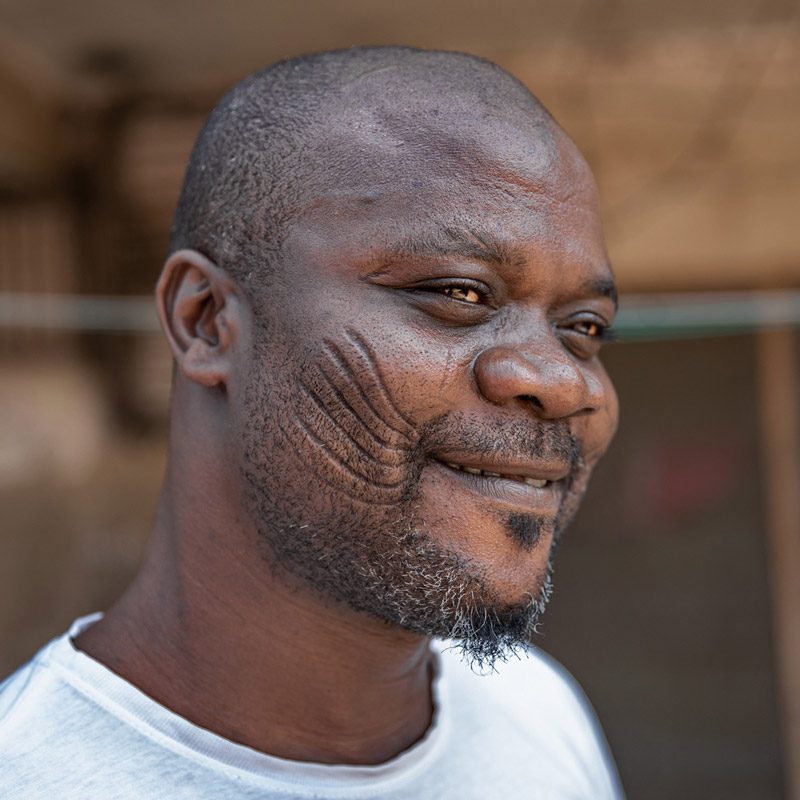
© Photographs by Aníbal Bueno, Jordi Zaragozà and Jorge Fernandez
You can learn more about the Yoruba at www.101lasttribes.com
